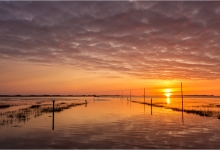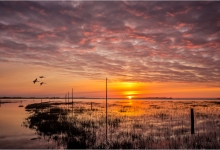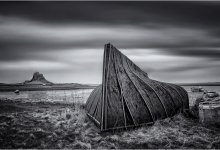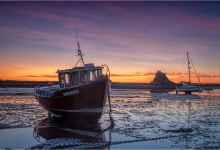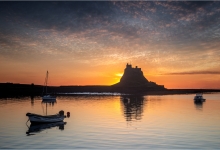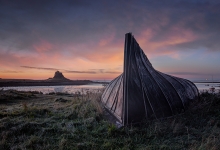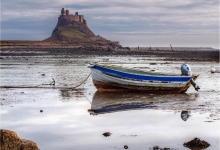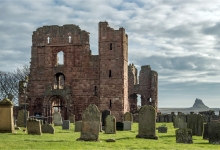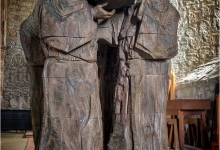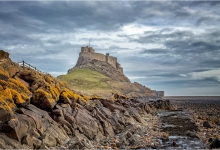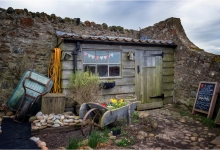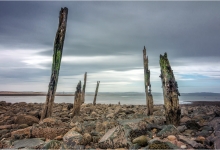Lindisfarne (or more correctly The Holy Isle of Lindisfarne) is a wonderful location for photographers, combining scenery, history and wildlife in a small area. The island is located off the coast of Northumberland and is reached by a causeway which closes at high tide, so any visits have to be planned around the tide times. As the causeway crosses tidal mud-flats, there are often wading birds to be seen close to the road.
The Island first gained importance when a monastery was founded here in 634 AD by St Aiden, who was sent from Iona at the request of King Oswald of Northumbria. For the next 160 years the monastery flourished as one of the principal centres of Christianity in the north of England – it’s most famous abbot being St Cuthbert. Then in 793 AD the peace was shattered when the island was raided by the Vikings, an event which marked the beginning of the Viking age. Following the full scale Danish invasion of England and the defeat of the kingdom of Northumbria, the monks eventually abandoned the island in 875 AD, carrying the remains of St Cuthbert to a new location at Durham Cathedral. However a new Benedictine priory was founded on the island by the Normans in 1093, which survived until the reformation in 1536, and the ruins of this priory that can be seen today. When the priory was re-established, the site of the original monastery was developed as the parish church, and parts of the Saxon Wall of the monastery can still be seen in the church.
The other main historical building is Lindisfarne Castle, which was constructed on Beblowe Crag in the 16th century under the rule of Henry VIII and Elizabeth as a defence against the Scots and later refurbished by Sir Edward Lutyens. The castle makes a fine backdrop for photographs taken from the harbour. Along the East side of the harbour there are also the famous Lindisfarne Boatsheds – upturned boats that are used as sheds. Cut into the crag under the castle there are a series of lime kilns dating from the 19th century and to the north of the castle there is a small garden designed by Gertrude Jekyll.
 Location and Parking
Location and Parking
Postcode: TD15 2SE
As a major tourist attraction the island is signposted from the main A1 road. Turn east off the A1 at the Lindisfarne Hotel and continue across a level crossing and in just under two miles descend to the causeway. This runs for about 2 miles until a pay and display car park is reached on the right hand side. There are some lay-bys on the causeway which can be used for observing bird-life on the mud flats. From the main car park, it is a 0.5 mile walk to the priory, 0.8 miles to the harbour and just over 1 mile to the castle.

